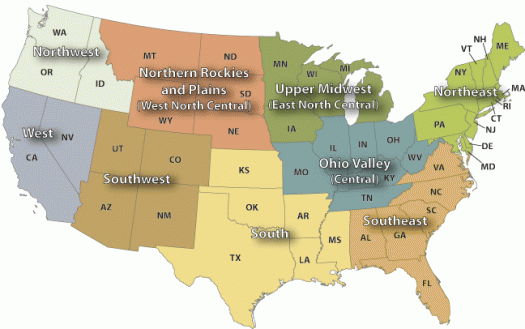Particulate Matter (PM10) Trends
National Trends in PM10 Levels
Using a nationwide network of monitoring sites, EPA has developed ambient air quality trends for particle pollution, also called Particulate Matter (PM). PM10 describes inhalable particles, with diameters that are generally 10 micrometers and smaller. Under the Clean Air Act, EPA sets and reviews national air quality standards for PM. Air quality monitors measure concentrations of PM throughout the country. EPA, state, tribal and local agencies use that data to ensure that PM in the air is at levels that protect public health and the environment. Nationally, average PM10 concentrations have decreased over the years. For information on PM standards, sources, health effects, and programs to reduce PM, please see www.epa.gov/pm-pollution.
How to Interpret the Graphs
Regional Trends in PM10 Levels
Air quality trends can vary regionally. The following climatically consistent regions within the contiguous United States provide a relevant way to look at regional trends in air quality.
 Source: NOAA National Climatic Data CenterSelect a region: (graph appears below)
Source: NOAA National Climatic Data CenterSelect a region: (graph appears below)
